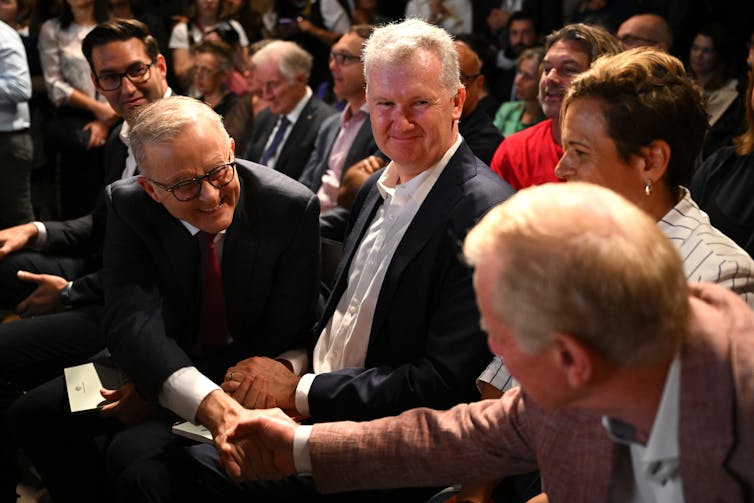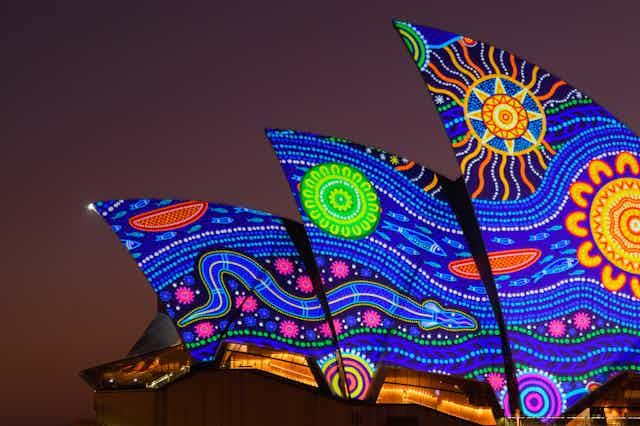It’s finally been launched. A new cultural policy for Australia. After years (actually decades) of neglect, Prime Minister Anthony Albanese today launched a new national cultural policy, Revive. In his speech he said:
Arts are meant to be at the heart of our life
It’s important that our prime minister says this and owns the centrality of culture in our lives. The last prime minister who acknowledged the importance of the arts in Australian life was Paul Keating 30 years ago.
It has been a long time since.
The arts have had a tough time in Australia for many years. While the population of Australia has increased, arts funding has remained stagnant. In some areas of funding, such as grants for individual artists, there has been at least a 70% drop since 2013.
The Labor Party last launched a cultural policy, Creative Australia, in March 2013. Soon after, Labor lost government and Creative Australia never came to fruition. Under the Coalition government, Australia did not have a national cultural policy.
So what does this new document mean for Australia’s artists – and audiences – going forward?
‘Modernising’ the Australia Council
Revive is framed as being inclusive. Its subtitle is “a place for every story, a story for every place”. Throughout the document, First Nations people are given priority. The hefty policy document comes in at more than 100 pages, and the preface by Christos Tsiolkas and Clare Wright is a must-read, setting the tone for what is to follow.
The centrepiece of the new policy seems to be the rebranding, or “modernising”, of the Australia Council. While the name of the legal governing body will remain at the top, the name underneath will become Creative Australia.
What happens within will also seemingly change.

The government is restoring previous funding cuts ($44 million) to the Australia Council. There will also be new entities within the Creative Australia revised framework, each with a new budget. These are a new First Nations First Body ($35.5 million), Music Australia ($69.4 million), Writers Australia ($19.3 million) and the Centre for Arts and Entertainment Workplaces ($8.1 million).
There will be a further investment in “works of scale” ($19 million), which seems to be aimed at helping work translate through different mediums or for different audiences.
In this new framework, there is an emphasis on First Nations programs being led by First Nations people. Alongside the First Nations First Body, $11 million will go towards establishing a First Nations Languages Policy Partnership, incorporating languages into Australian education, and $13.4 million will be directed to legislation to protect First Nations knowledge and cultural expressions, including ensuring the authenticity of First Nations art.
The changes beg the question: what will happen to existing structures within the Australia Council? The Australia Council has announced its own briefing in relation to the policy later in the week.
Not just for the arts industry
The remodelled agency will not just be responsible for the not-for-profit sector but also the commercial sector, particularly popular music and publishing, and philanthropy.
An important step forward in the policy is the emphasis on the centrality of the artist and acknowledging arts workers as legitimate workers. The creation of a Centre for Arts and Entertainment Workplaces will aim to address issues around professional payments and conditions for arts workers.
There is also reference to the crucial role of arts education. This is a positive step forward with a commitment of $2.6 million to support specialist in-school arts education programs.
Other areas that are acknowledged are the development of an Arts and Disability Plan ($5 million) and pilot funding of $4.2 million to support access to art and music therapy programs.
The introduction of lending rights fees for the digital area is a long overdue reform and will be important for writers ($12.9 million). The resale royalties scheme for visual arts practice ($1.8 million) will also be important, but may be impossible to enforce internationally.
There is also a commitment to better data collection around the sector and the publication of a comprehensive report every three years. This is a move forward, but it needs to include qualitative as well as quantitative data, and needs to be transparent.
There is limited reference in the document to how the heritage institutions will be addressed. Present budget shortfalls are affecting their ability to do their role. The government has said previously it will be addressing this in the next budget.
There is a commitment, though, of $11.8 million towards loaning the collection of the National Gallery of Australia to suburban and regional art galleries, and the regional area arts fund will get a boost of $8.5 million.
Read more: Australia is to have a poet laureate – how will the first appointment define us as a nation?
A success still to be seen
A promise in the document to ensure Australian stories are being told through streaming services is going to be important. How this will be achieved is yet to be revealed.
There is limited reference to increasing Australia’s cultural presence abroad, but the details are vague and this again has been an area of significant neglect for several years.
The small to medium sector and individual artists have suffered the most over the 20 years of reduced funding. How will they fit into this ambitious plan? While there is emphasis on the adequate remuneration of artists, whether the actions recommended will be sufficient remains to be seen.
Overall, there are many positive actions in the new policy, but the devil will be in the details on how it is rolled out.
This new policy is definitely not a game changer, but it is going in a healthier direction.

